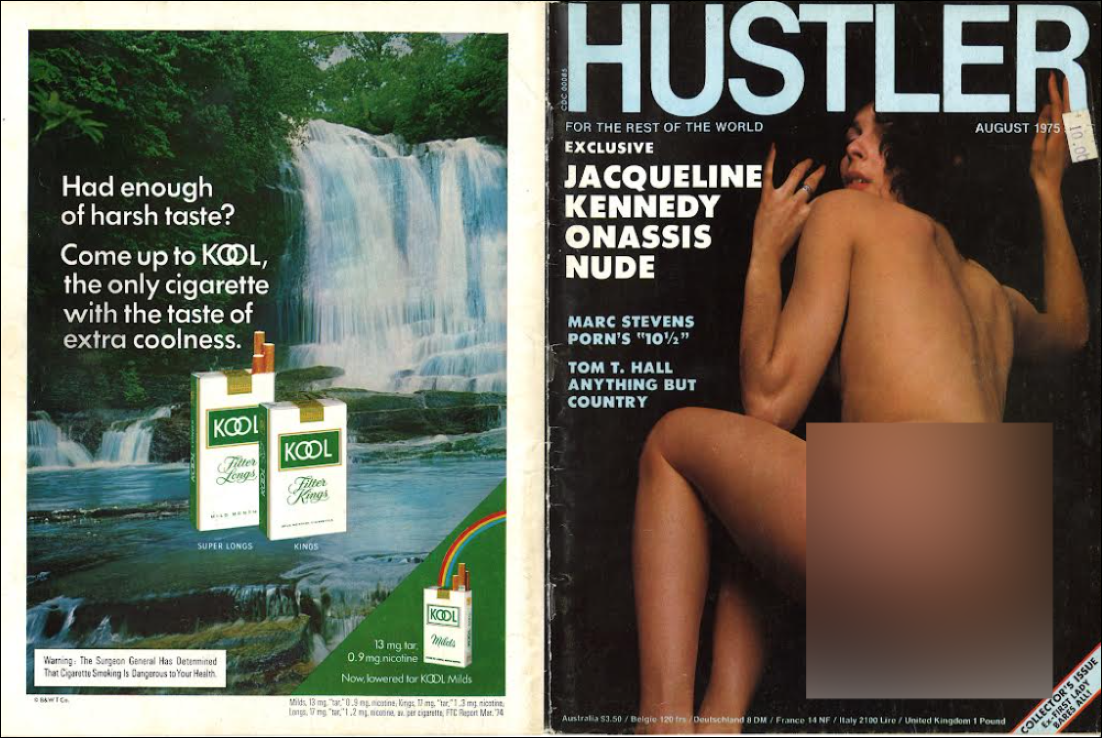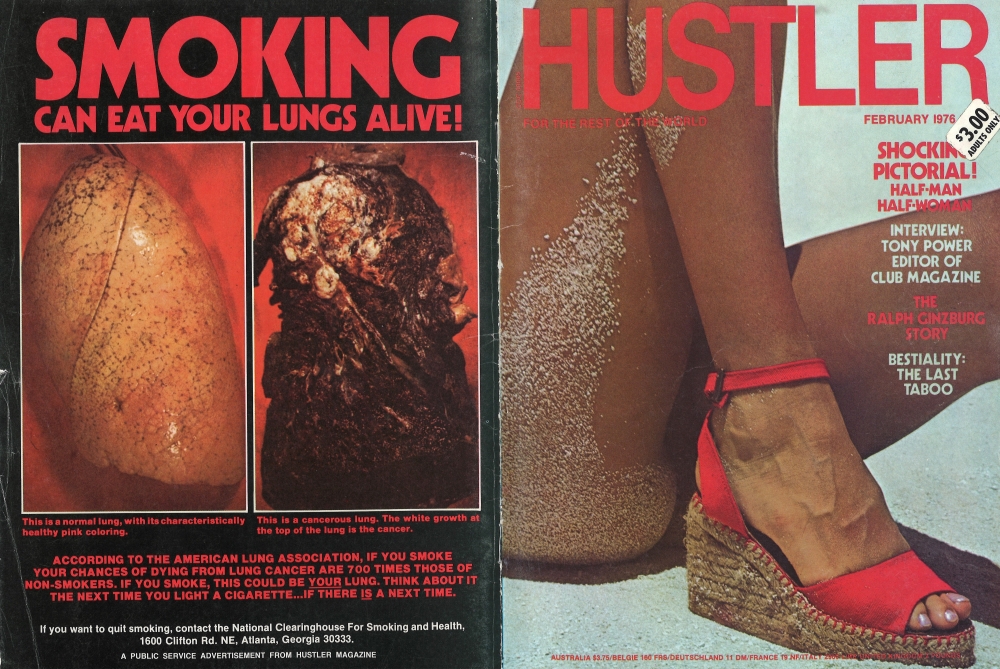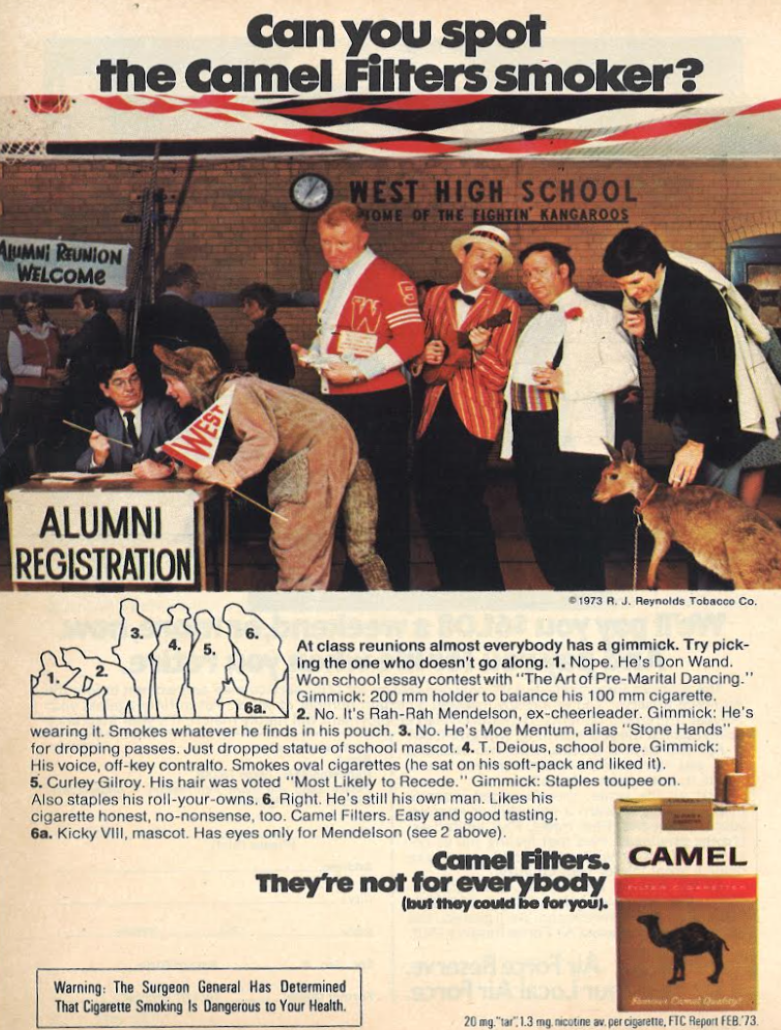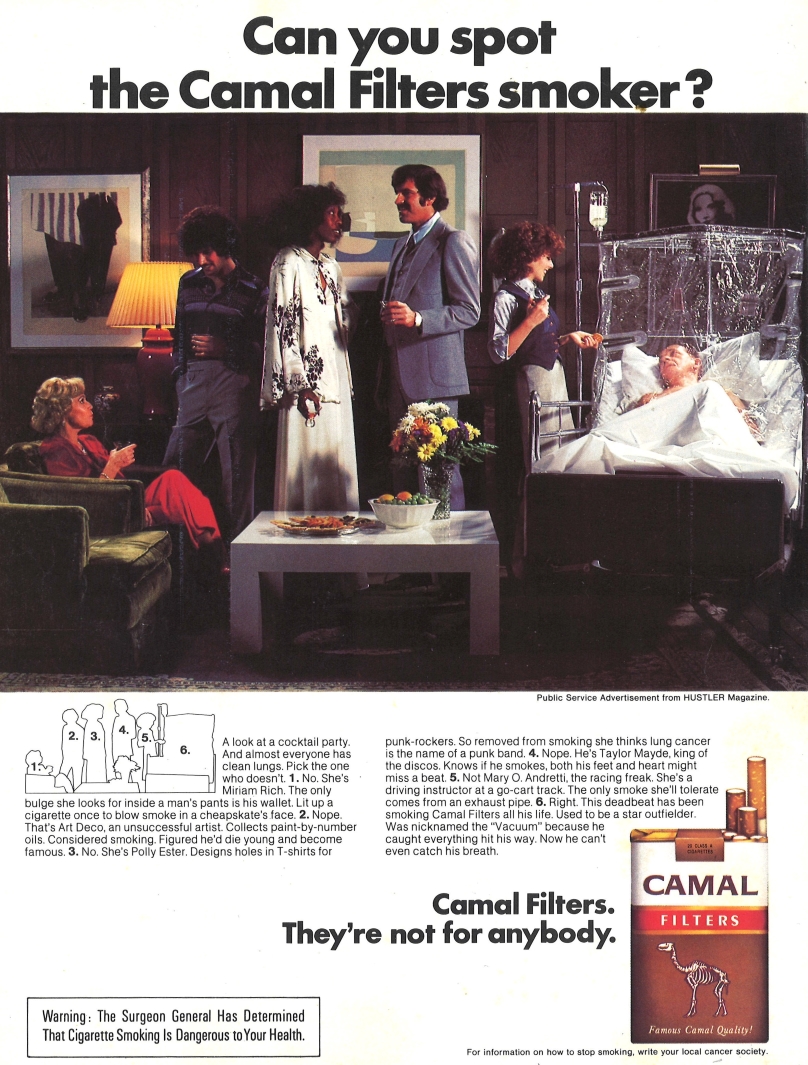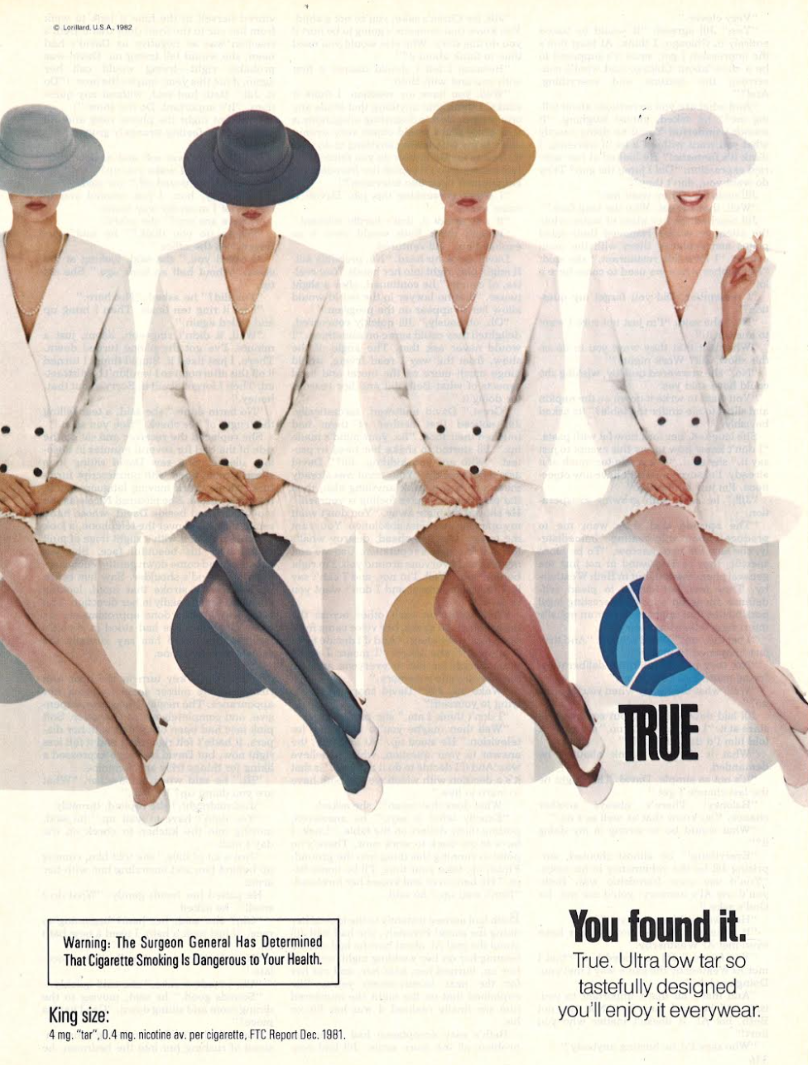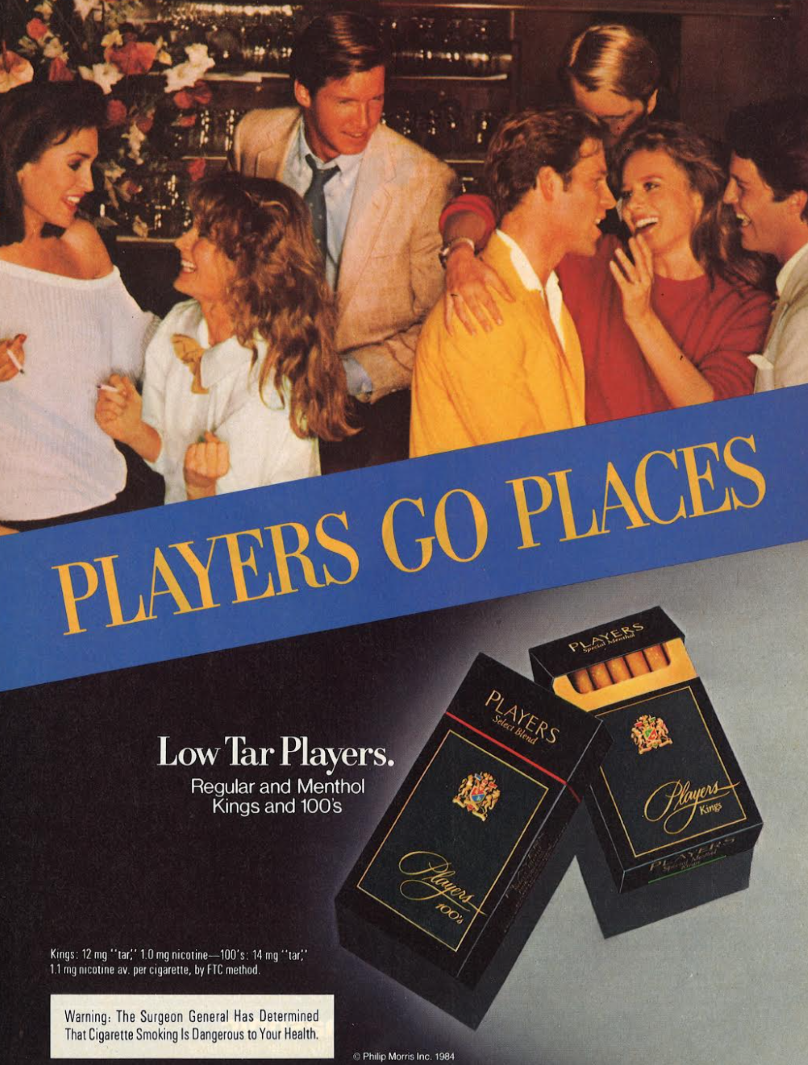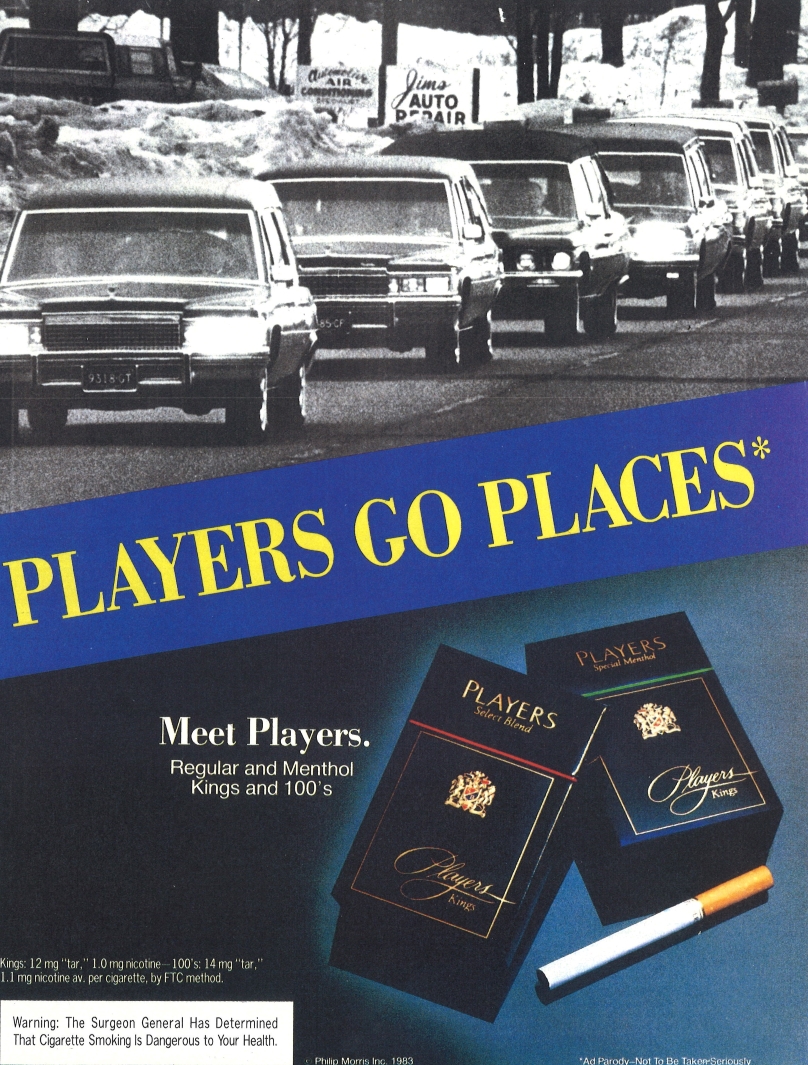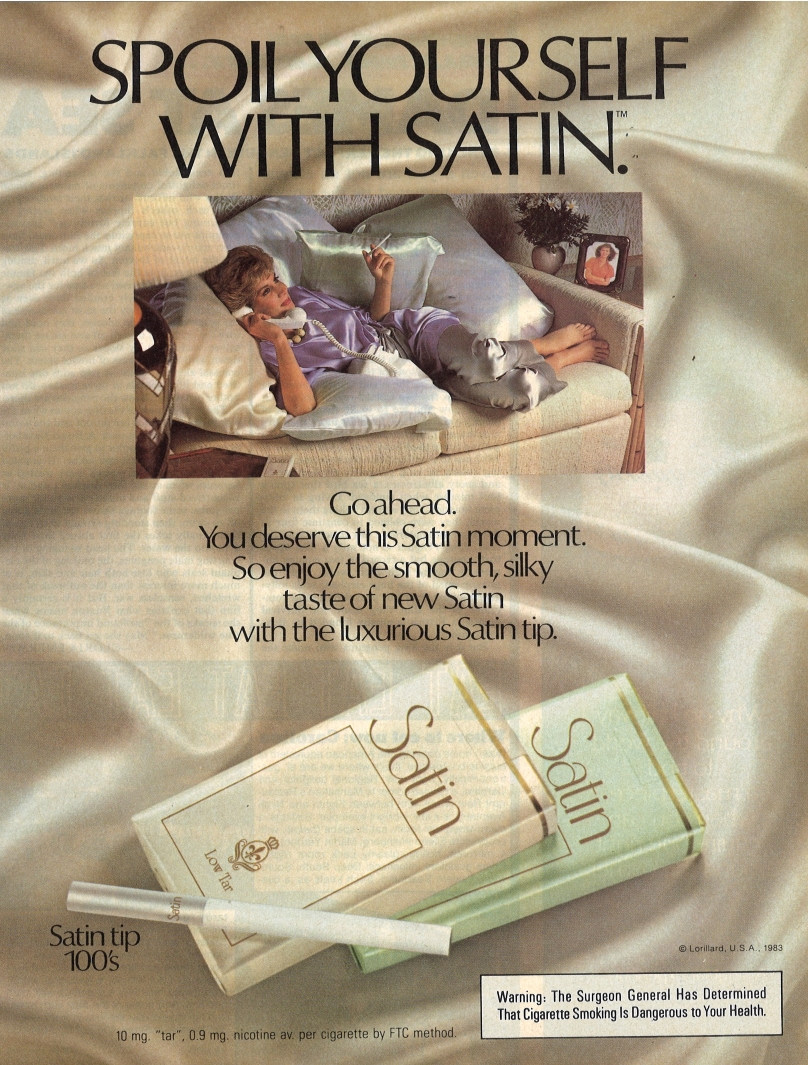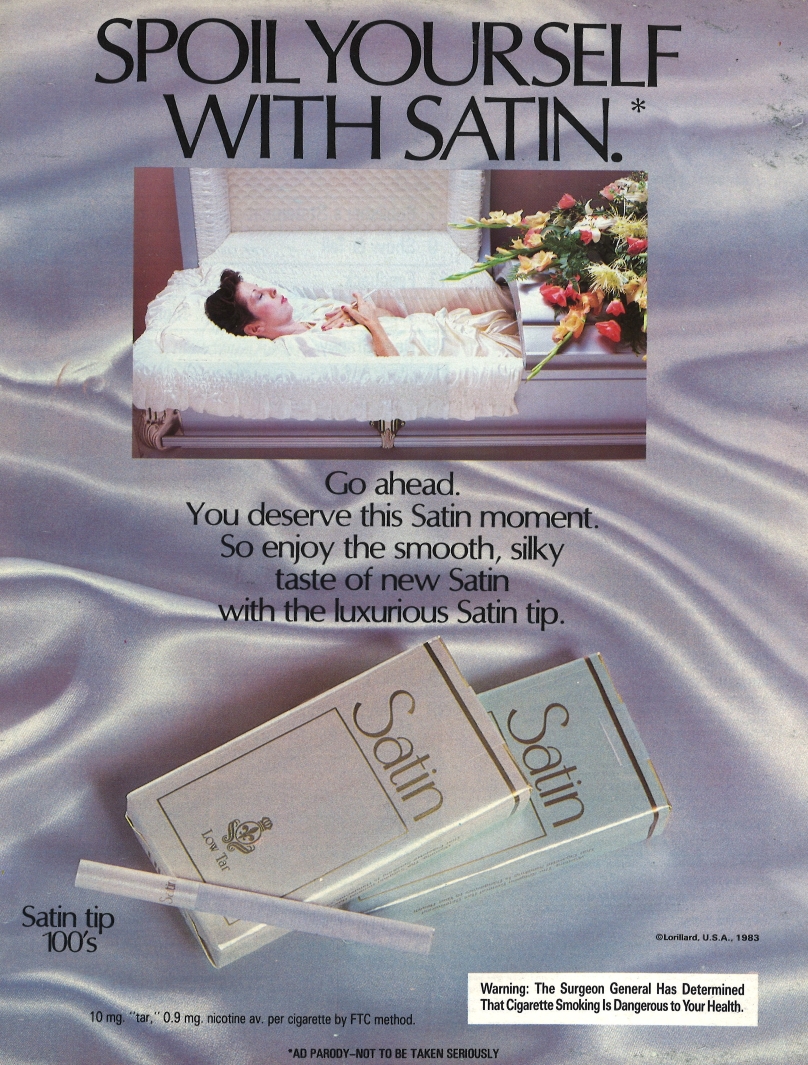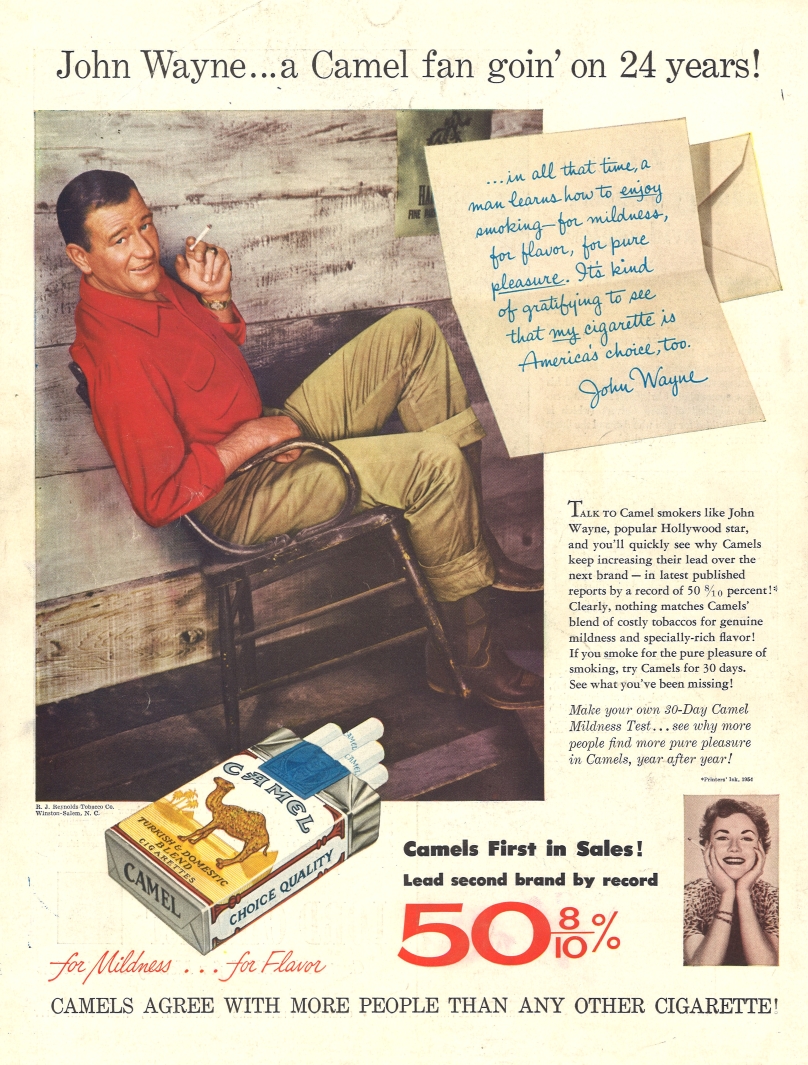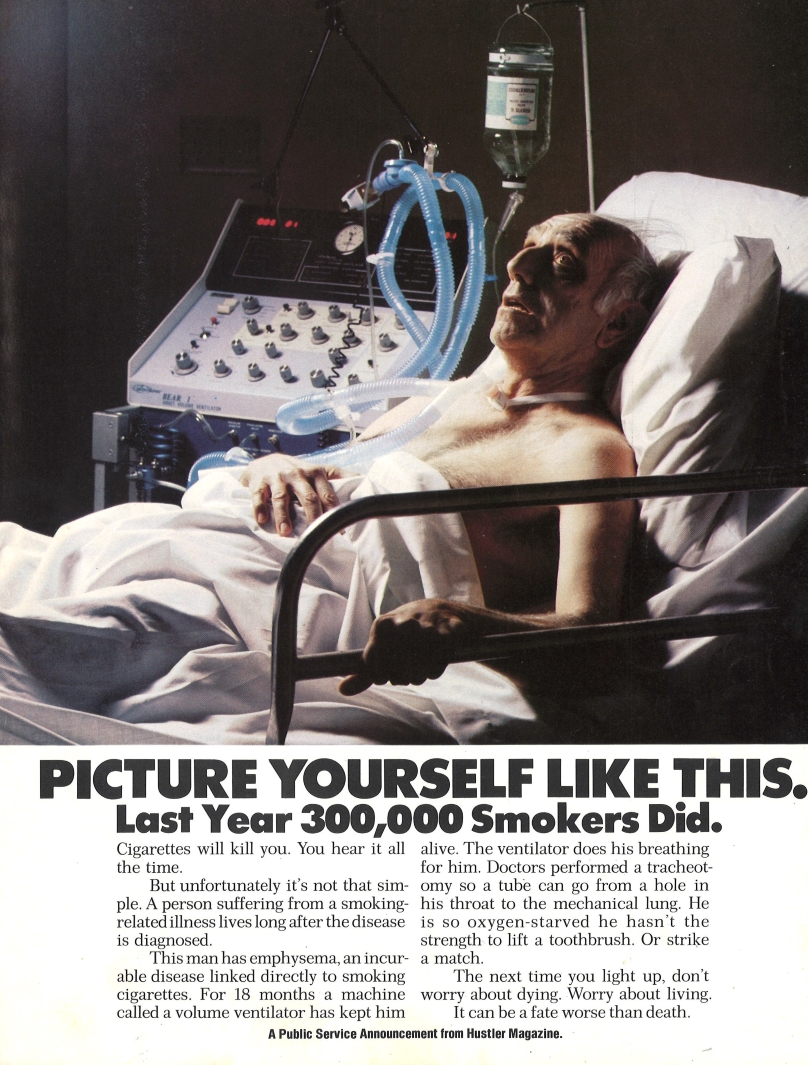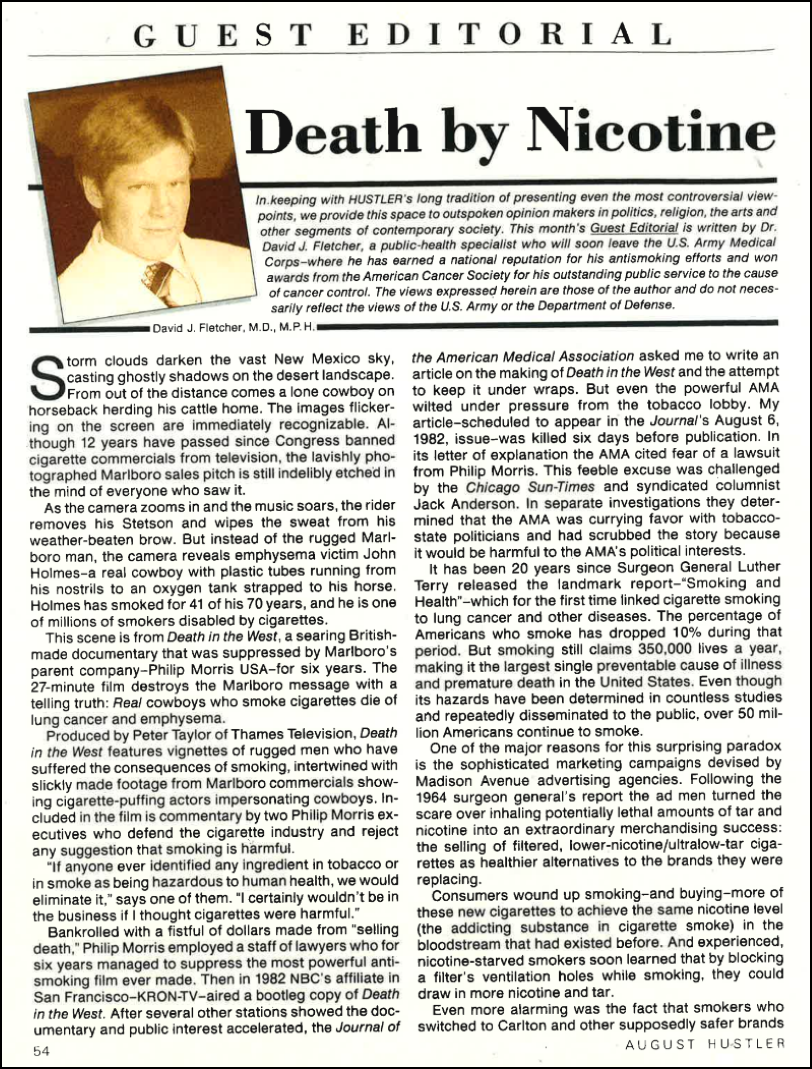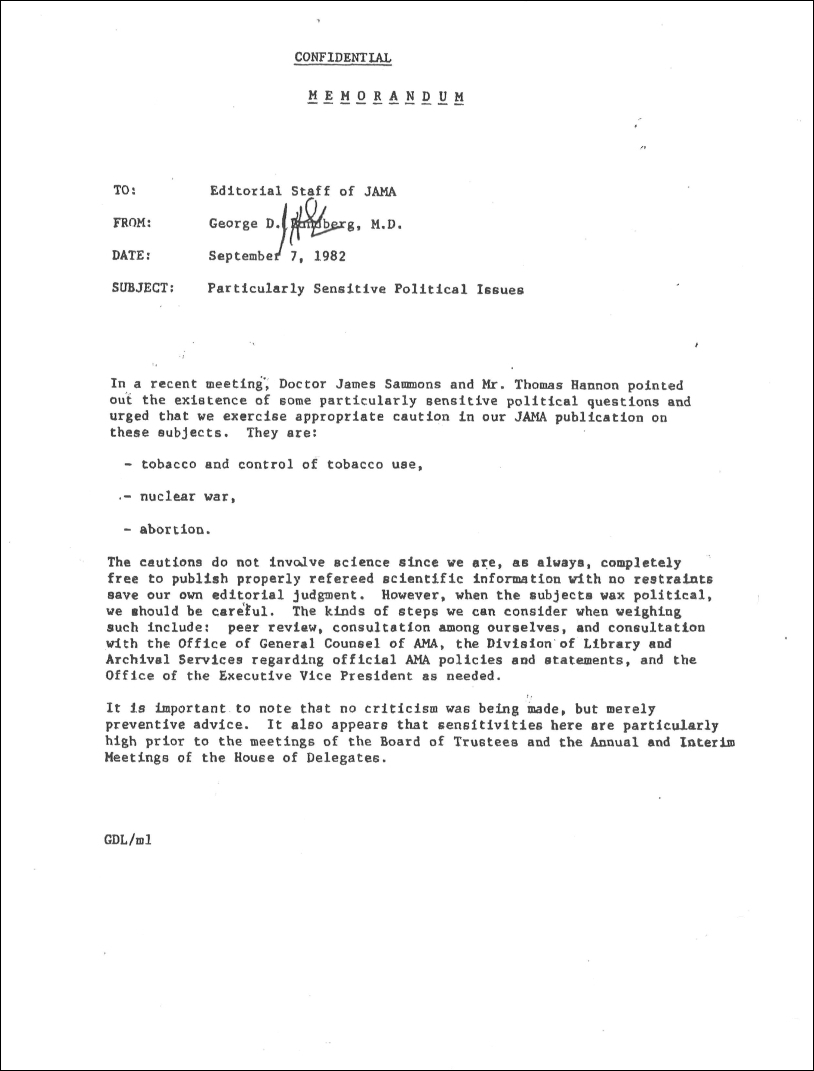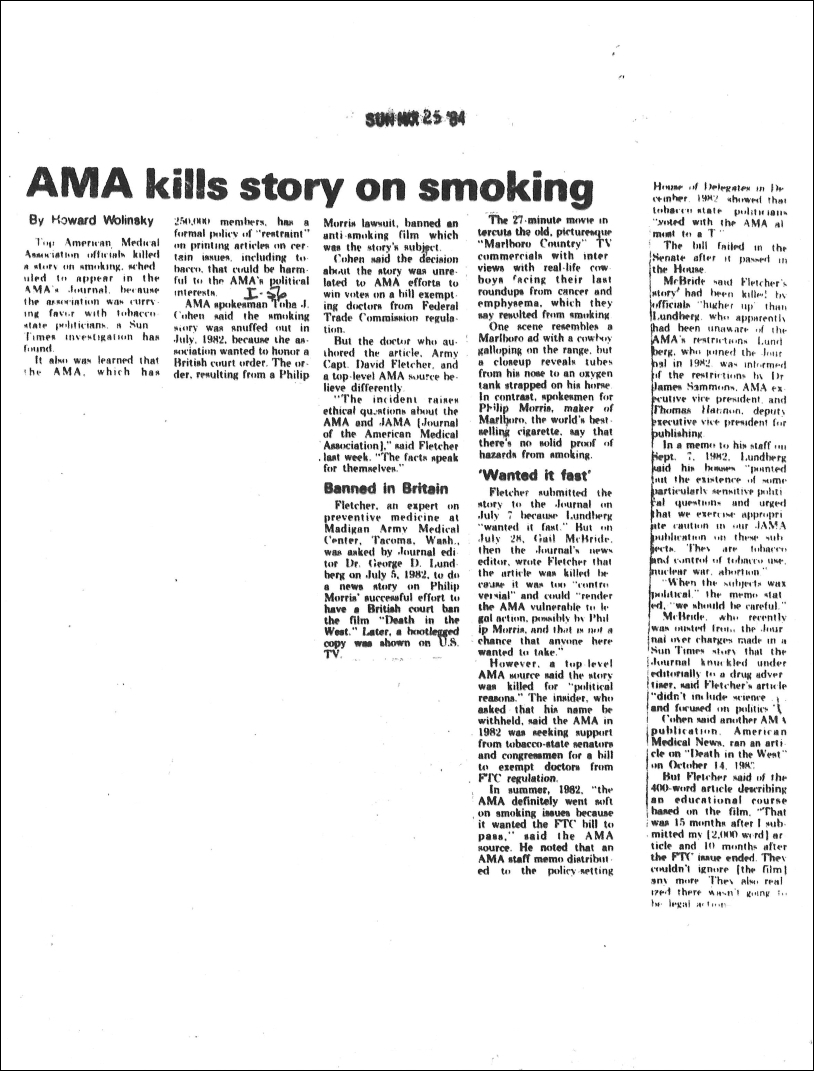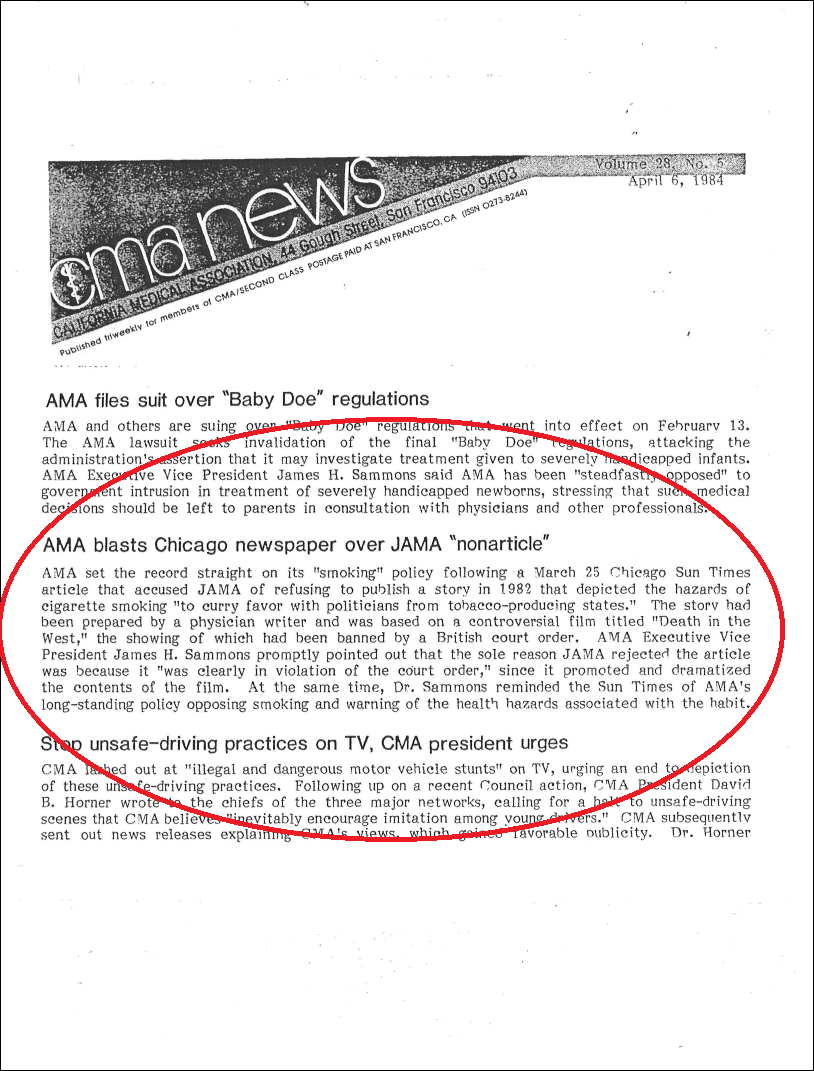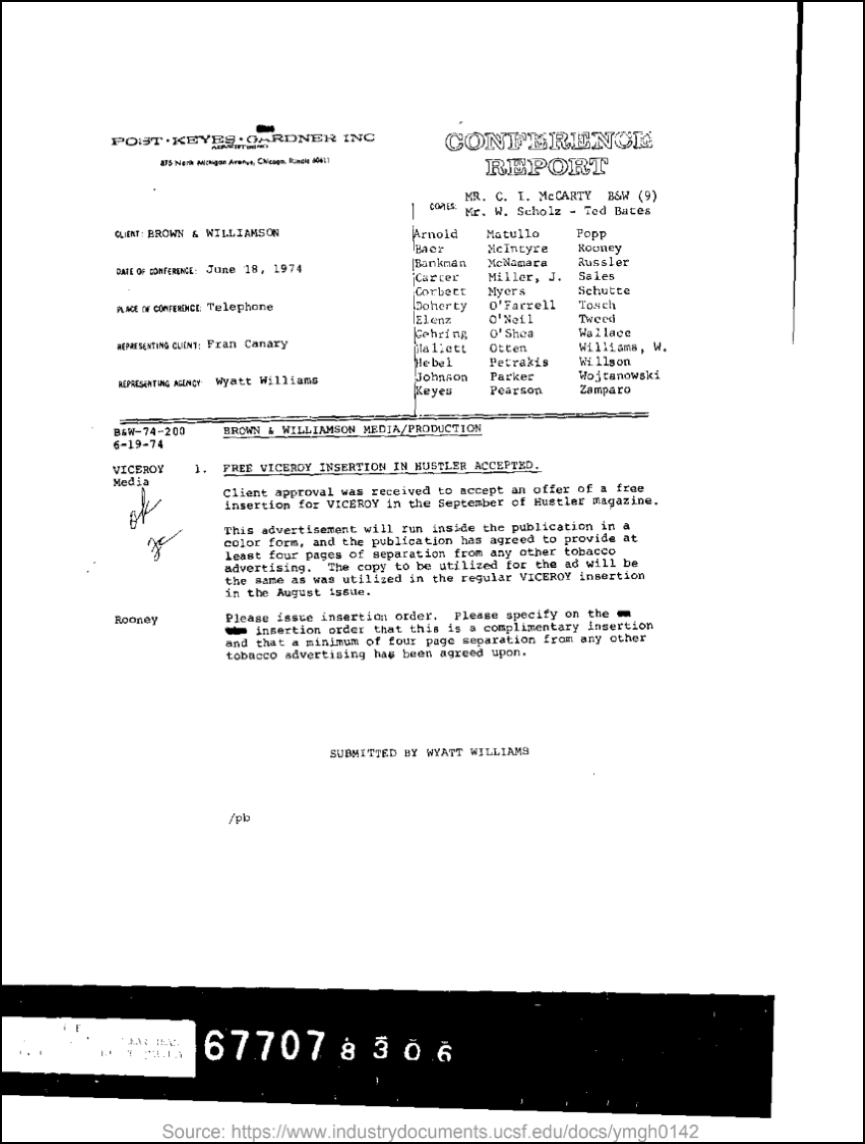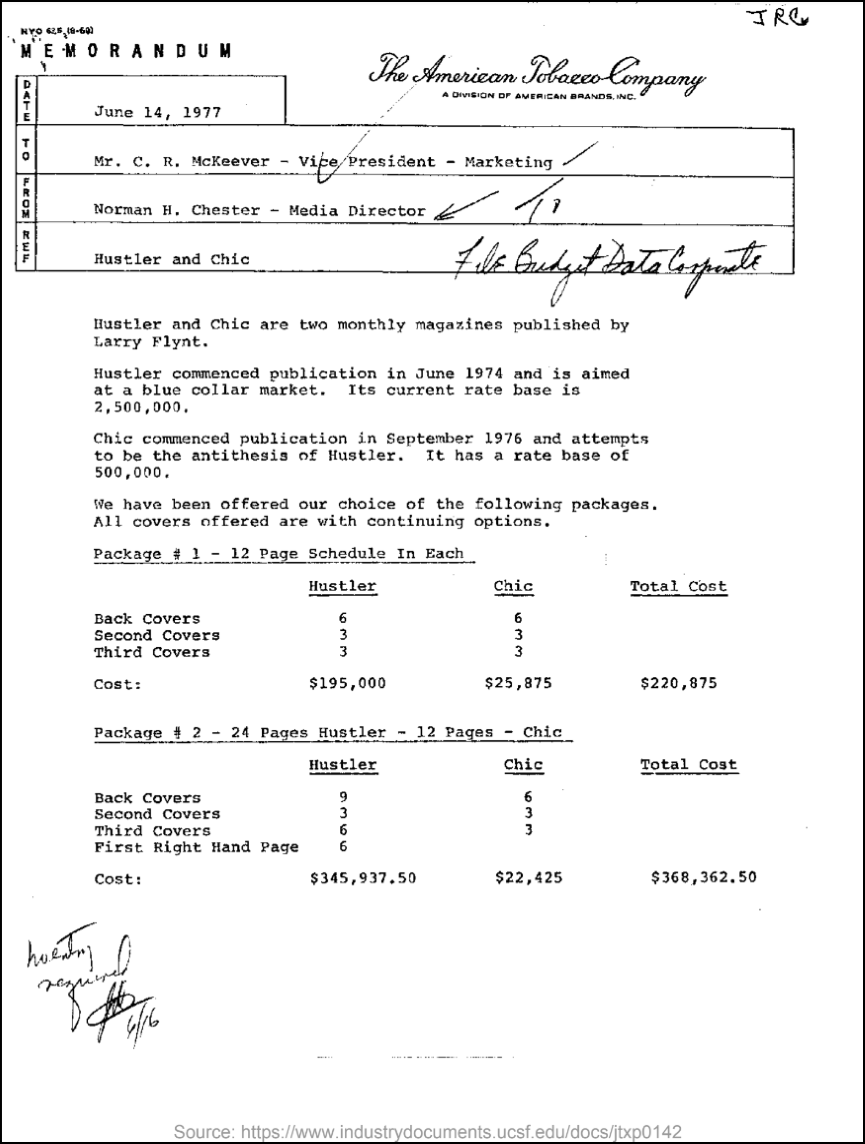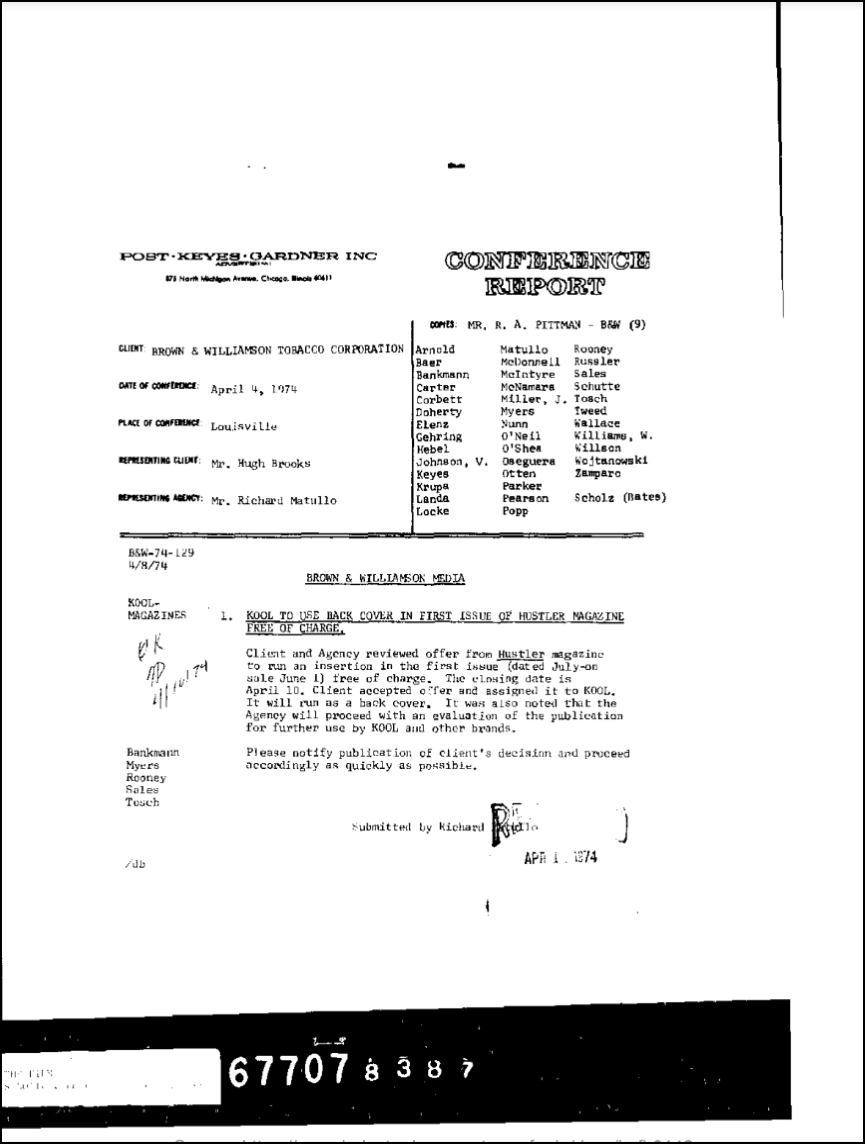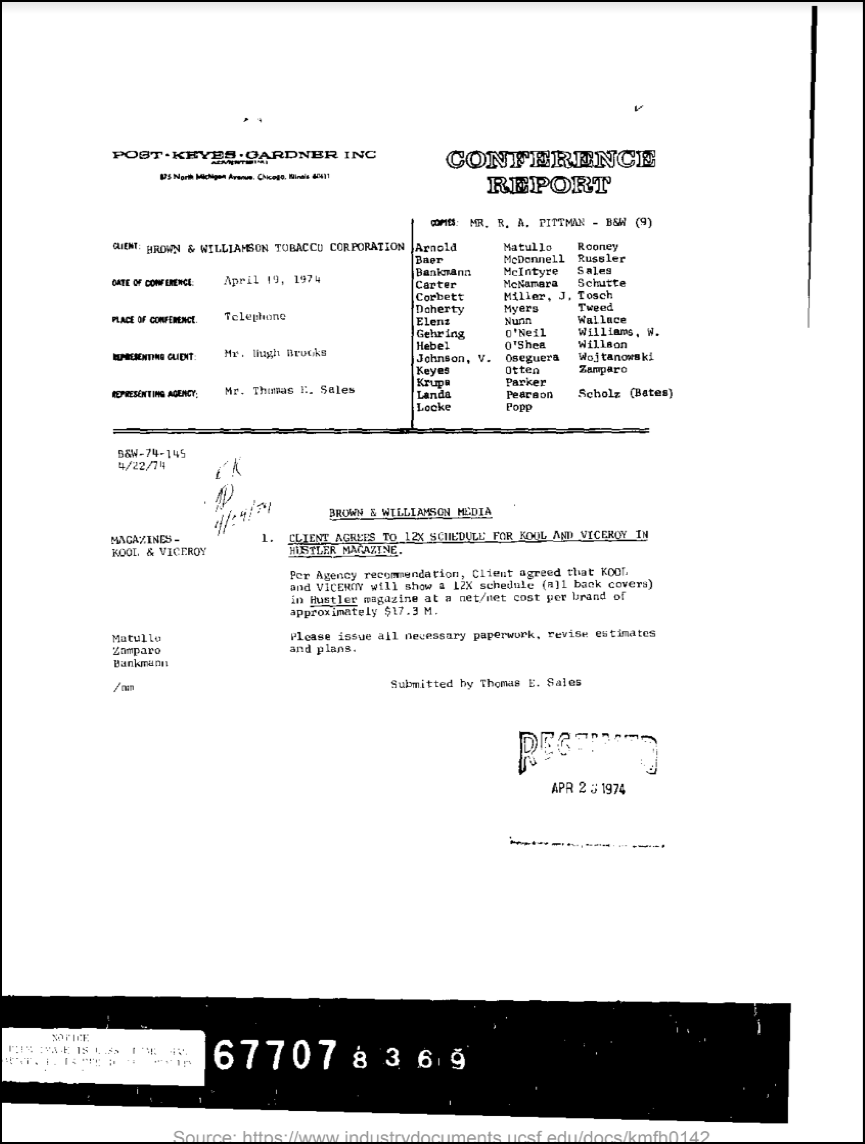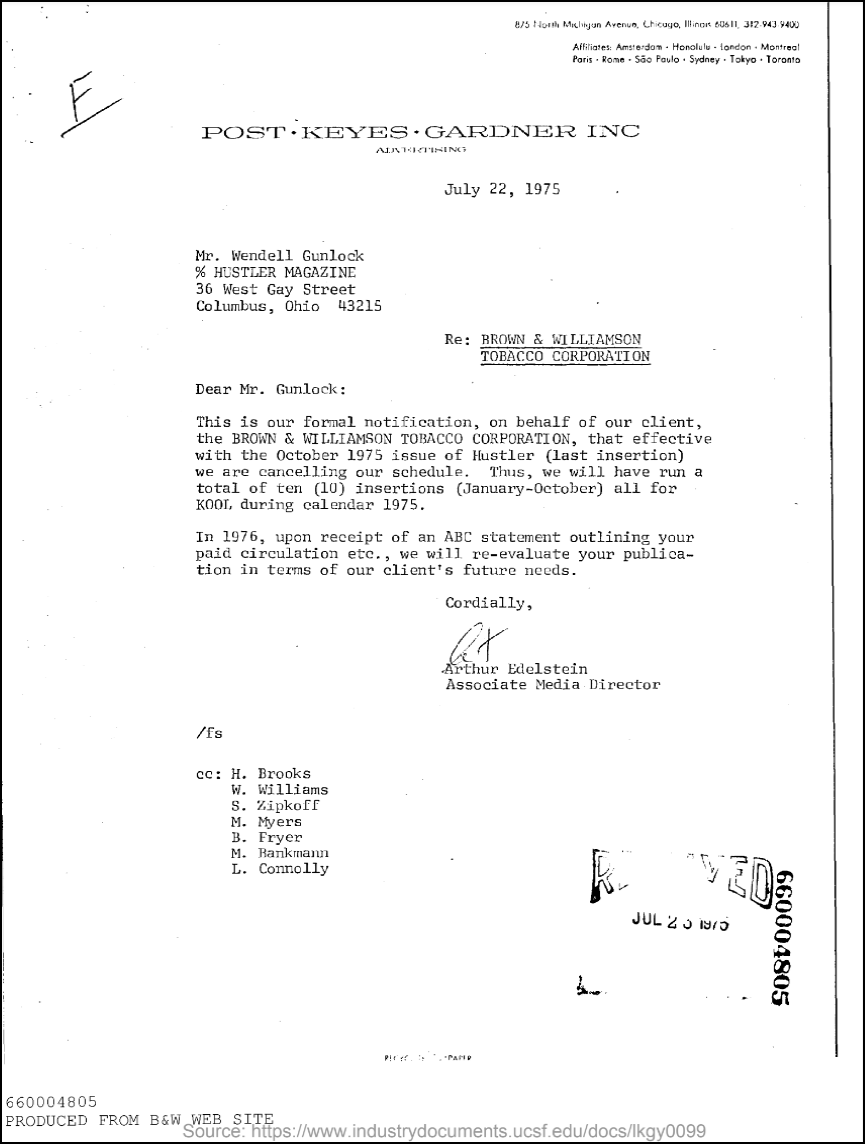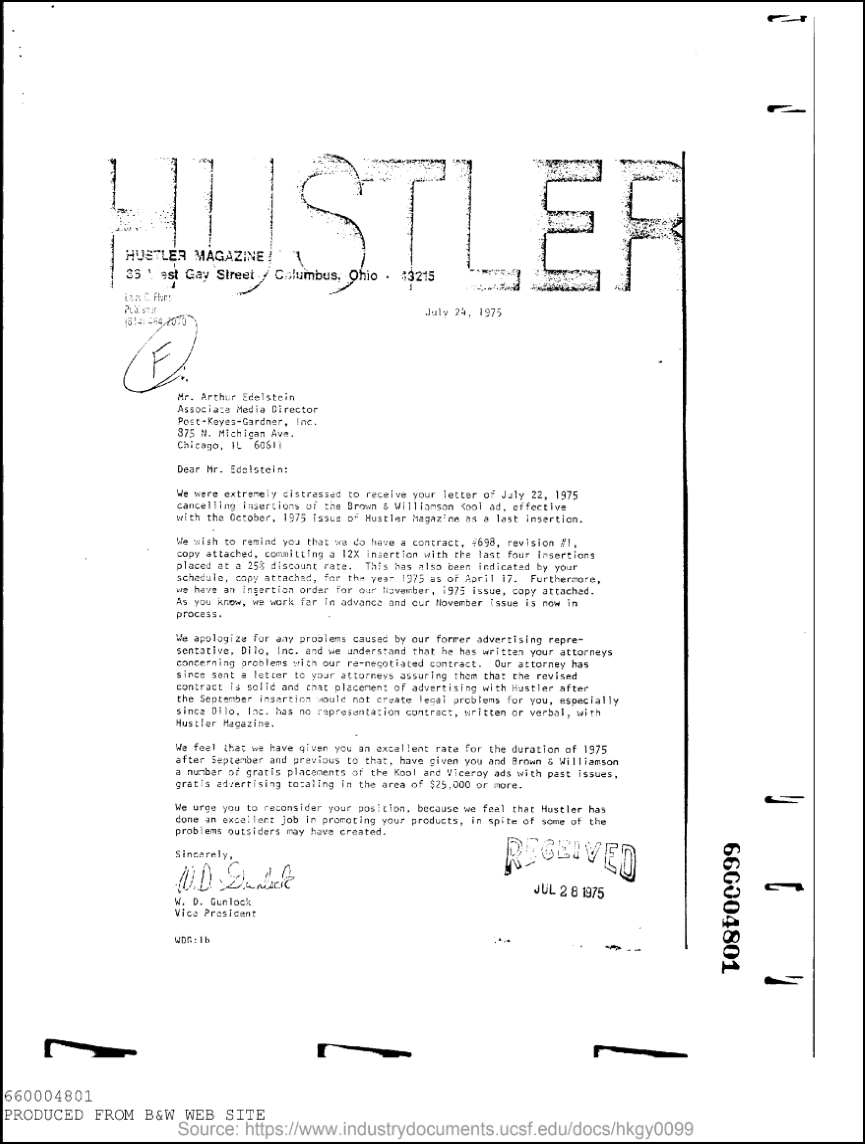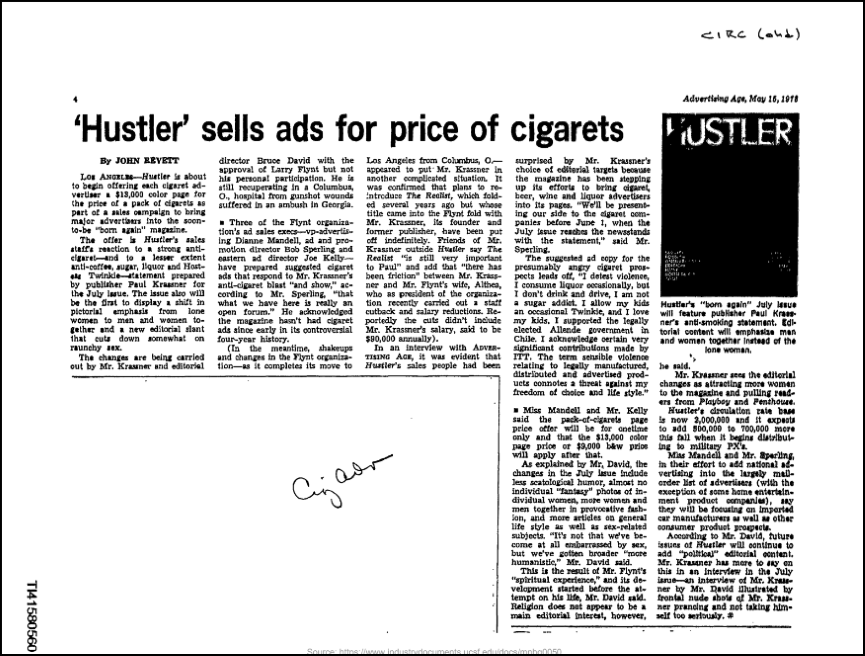Larry Flynt Strikes Back at Cigarette Advertisers
In 1976, while publishers Hugh Hefner of PLAYBOY and Bob Guccione of PENTHOUSE were making millions of dollars using sex to sell cigarettes (along with beer, whiskey, and cars), HUSTLER publisher Larry Flynt launched a campaign against cigarette smoking and the tobacco industry that included cancerous lungs and caustic parodies of the cigarette ads appearing in his rivals’ publications and in dozens of other magazines from Esquire and Sports Illustrated to Cosmopolitan and Ladies’ Home Journal. No other publisher dared to go toe to toe with the cigarette makers. Nor, for that matter, did any medical organization, health foundation, university, public health group, cancer center, or even the American Cancer Society.
HUSTLER published anti-cigarette parodies for nearly a decade, after which the magazine continued to mock cigarette ad icons like Joe Camel and tobacco industry apologists such as North Carolina Jesse Helms and Republican presidential nominee Bob Dole.
But the motivation for Flynt’s campaign turns out to have been more vindictive than valorous. When HUSTLER debuted in July 1974, an ad for Brown & Williamson Tobacco Corporation’s KOOL cigarettes appeared on the back cover. What’s more, according to internal Brown & Williamson documents, HUSTLER had offered the cigarette company this prime space free of charge. Two months later, Brown & Williamson received another freebie for Viceroy cigarettes. The company then contracted with the magazine for KOOL ads in every issue in 1975. But by mid-year Brown & Williamson had second thoughts about HUSTLER and canceled its ads effective with the October issue. One can only surmise that the more explicit nature of the magazine reflected poorly on its advertisers.
In February 1976 HUSTLER’s first anti-cigarette ad appeared. Yet just a year later an internal memo of the American Tobacco Company (maker of Lucky Strike and Pall Mall) reported that the magazine had offered a discounted advertising rate, which the company rejected because “we are well represented in Playboy and Penthouse.” And in 1978 Advertising Age reported that HUSTLER was offering cigarette advertisers a $13,000 color page “for the price of a pack of cigarettes” to win them back. This time, apparently no cigarette maker took the magazine up on it.
This exhibition features nearly all of HUSTLER‘s pungent parodies and hard-hitting articles against the tobacco industry and its products, as well as key background documents about the spiking by the Journal of the American Association of an anti-tobacco industry article by Dr. David Fletcher and the courting of cigarette advertisers by HUSTLER.
–Alan Blum, MD, Director, The University of Alabama Center for the Study of Tobacco and Society



